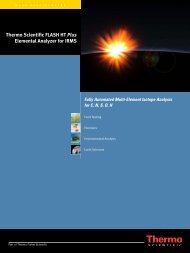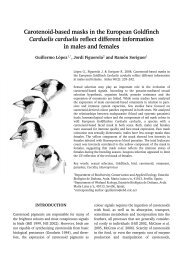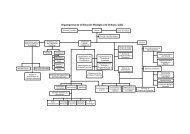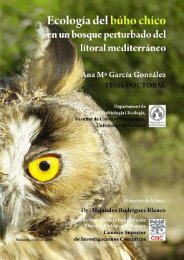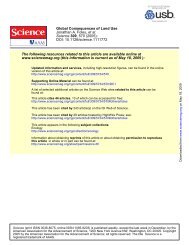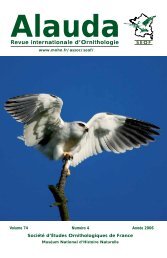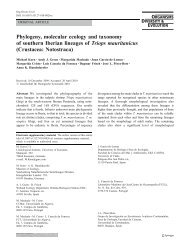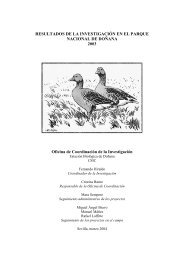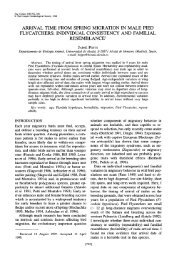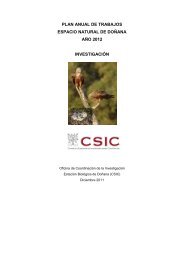Voucher Specimen Collection Preparation Identification and Storage ...
Voucher Specimen Collection Preparation Identification and Storage ...
Voucher Specimen Collection Preparation Identification and Storage ...
Create successful ePaper yourself
Turn your PDF publications into a flip-book with our unique Google optimized e-Paper software.
presence of a species, it is generally accepted that one specimen of each species is adequate.<br />
However, for taxa that are difficult to identify <strong>and</strong> for small organisms, additional specimens<br />
may be needed.<br />
It is impossible to generalize as to how many specimens should be collected. See <strong>Voucher</strong><br />
Requirements, sections 3.1, 4.1, ...7.1, for detailed recommendations. Inventory personnel<br />
must also discuss this issue with museum curators prior to field work.<br />
2.3 <strong>Preparation</strong> <strong>and</strong> Care of <strong>Specimen</strong>s<br />
2.3.1 Photo Documentation<br />
Photographs taken to provide documentation for species identification should be taken with a<br />
macro or close-up lens, <strong>and</strong> they should show features used for identification <strong>and</strong> scale of the<br />
photo. Photographs should be submitted with the pertinent raw data. It may be necessary to<br />
take more than one picture of one specimen from different angles.<br />
Ensure that slides or prints are kept in appropriate protective sleeves. They should be<br />
returned to the photographer once species identification has been verified or arrangements<br />
made for them to be kept as part of a permanent species record.<br />
2.3.2 Whole <strong>Specimen</strong>s<br />
After specimens are collected, special care is needed to ensure that they will arrive at the<br />
museum in excellent condition. In general, to avoid decomposition, specimens should be<br />
prepared as soon as possible after collection, if not already done in the field (see taxon<br />
specific sections). Permissible time will vary with temperature <strong>and</strong> humidity conditions,<br />
however do not delay. <strong>Specimen</strong>s that are not killed in the initial collection procedure, must<br />
be anaesthetized appropriately (see section 1.1). Methods vary with taxon.<br />
It is important to note that methods may have to be varied to suit taxonomists who will be<br />
identifying the specimens. The reference section of this manual includes publications <strong>and</strong><br />
reports that provide more complete details on collection, preparation <strong>and</strong> preservation of<br />
specimens.<br />
Note: <strong>Specimen</strong>s may not be accepted by the museum if they are not prepared properly (as<br />
outlined in relevant protocols).<br />
2.4 Data Needs<br />
The value of a voucher specimen relies on <strong>and</strong> can be greatly enhanced by accurate <strong>and</strong><br />
detailed data gathered at the time of collection. This section provides general guidelines <strong>and</strong><br />
recommended data to be recorded along with voucher specimens. See appropriate taxa group<br />
for specifics.<br />
2.4.1 Field Notebook<br />
Waterproof notebooks <strong>and</strong> indelible ink pens are recommended for use in the field. Although<br />
notebook set up depends on personal preference, legibility <strong>and</strong> clarity of entries are critical.<br />
8 June 9, 1999



